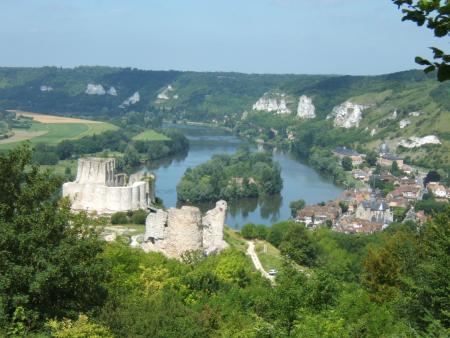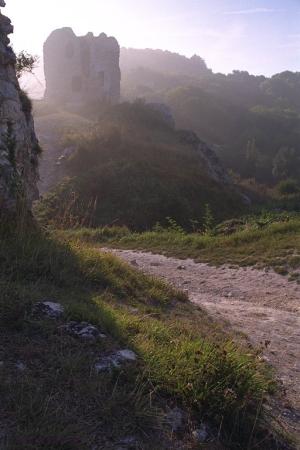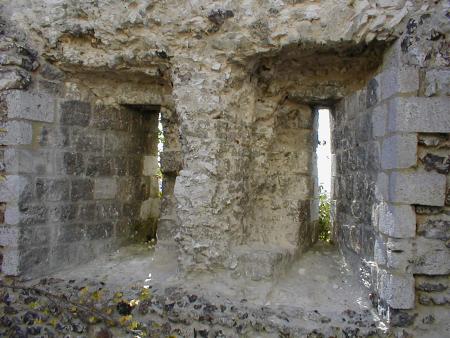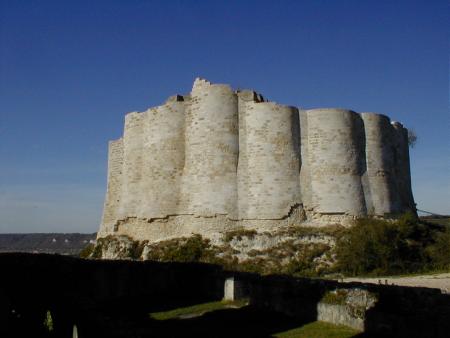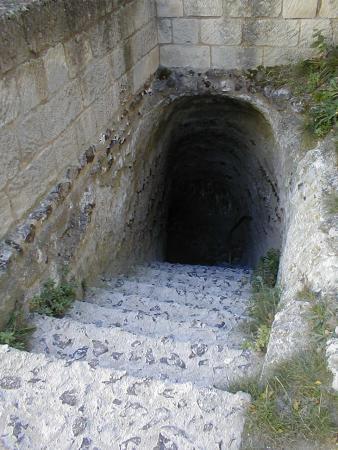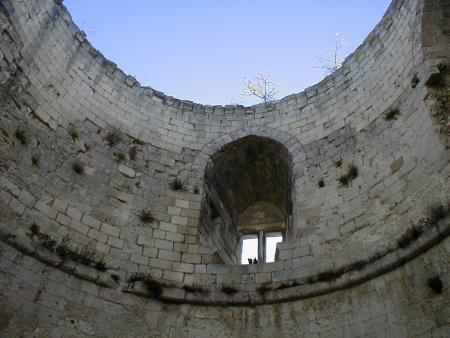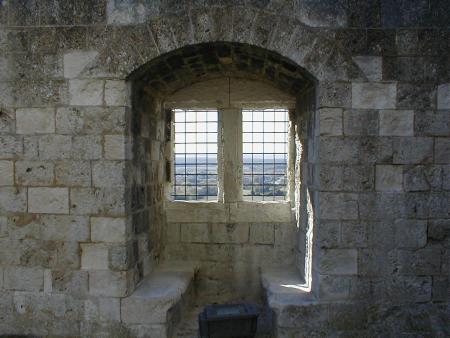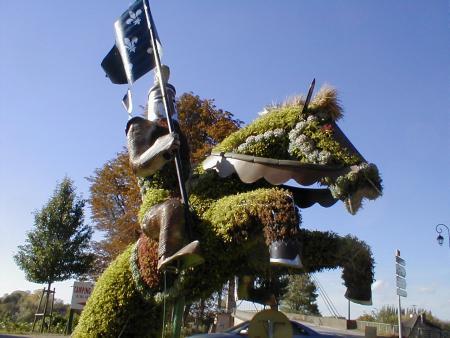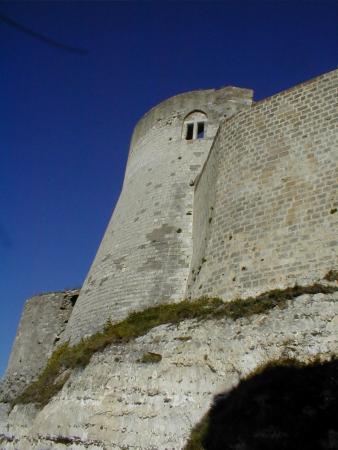Final Storm
1. Taking the Bastion
After seven months of blockade, Philip Augustus chose to storm the
fortifications. He built a covered road from the plateau to the advanced
bastion. Under this shelter, men could bring bundles of wood and earth to
fill the first ditch. They reached the bottom of the walls and mined
the tower. When the hole was large enough, they kept a fire burning in it.
A part of the tower eventually collapsed in a cloud of dust. The defenders
of the stronghold had to withdraw behind the first enceinte.
2. Taking the Outer Enceinte
According to the chronicle written in praise of Philip Augustus, the victorious
King of France, the besiegers easily wrested control of the outer walls.
Walking around, one of them noticed a small window three or four meters up
the wall. The Normans gave no thought to defending it, as it was the
window of the latrines. On March 6, 1204, a few French soldiers climbed
up through the window and entered the fortress.
Judging by the noise they made, the Normans imagined
there were many of them and hastened to light a fire in order
to bar their way, but the wind blew the smoke back in their direction. The
defenders were forced to hide behind the second enceinte.
Historians have doubts about the veracity of this story. The most probable
assumption is that the assailants penetrated the castle through
the badly protected chapel that had been added by John Lackland, who did
not have his brother's mastery of defensive design. As the French could
not boast of having defiled a holy place, they invented this episode of the
latrines.
3. The Innermost Ward
That same day, Philip Augustus bombarded the second wall with a great catapult.
Enormous stones fell on the ward and eventually opened a breach. The defenders
had no time to escape into the donjon, as they were too busy defending the
breach. They were soon overwhelmed by the numerous assailants. The inner
court was too narrow for them to fight in line. Roger de Lascy and his 129
knights were made prisoners. The brave defenders would be set free
in exchange for a ransom some time later. |

The donjon of Chateau Gaillard:
windows on the cliff side, machicolations on the plateau side |
![]()
